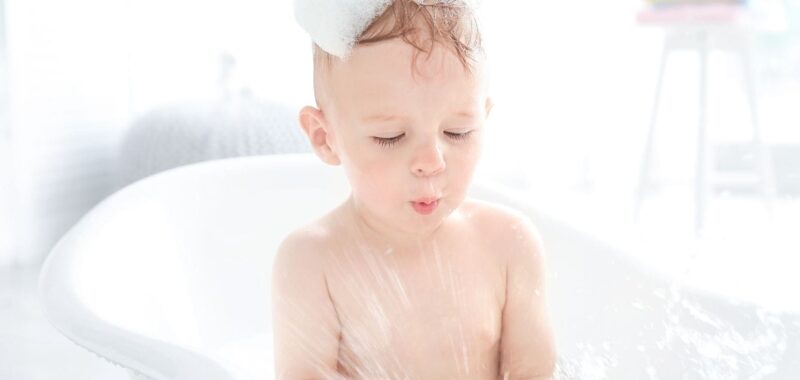A new study, published in the journal Environmental Health Perspectives, has found a link between the use of personal care products like lotions, ointments, and hair conditioners and exposure to endocrine-disrupting chemicals called phthalates, including in kids. Basically, children’s hormones can be affected negatively by several of these products.
According to NPR, phthalates are “a group of chemicals added to plastics to make them more flexible and durable” that are also used as ingredients in some personal care products. They can be endocrine disruptors, which means they can mimic, block, or interfere with the body’s own hormones. For kids, doctors and researchers worry that hormone disruption may occur at important developmental moments. Past studies have linked phthalate exposure during pregnancy and early childhood to impaired brain development, behavioral problems, girls getting their periods at younger ages, and other potentially negative impacts on kids.
Scientists are still learning about phthalates and their effects on us. The evidence that they harm people isn’t conclusive, but researchers say it’s building and becoming harder to ignore. One thing we know is that phthalates don’t stay in the body very long, but scientists are worried about their cumulative effect over time, when people are exposed to them repeatedly. And people — especially kids — of different racial and ethnic backgrounds seem to have different levels of exposure to phthalates found in personal care products.
“This is why we have great concern, especially among these very young children whose brains are still very actively developing,” said Michael Bloom, a professor at George Mason University and one of the researchers who worked on the new study. Bloom and his colleagues collected urine samples and other data from 630 children ages 4 to 8. They also had their parents fill out surveys about hair and skin products they’d applied to the kids within the last 24 hours.
“We found that the recent use of several different types of skin care products was associated with higher urinary concentrations of several different types of phthalates,” Bloom said. That reinforced findings from prior studies — similar results have been found in pregnant women and infants, though not in kids of these ages.
What Bloom’s study shows, though, is a clear link between phthalate exposure in kids and a wide range of personal care products, according to Dr. Lynn Goldman, a pediatrician and epidemiologist who formerly worked for the EPA.
“I think we should be much more concerned than we have been in the past about the fact that these [chemicals] might be allowed in cosmetics and personal care products,” Goldman said, adding that studies like this one demonstrate a need for regulators to look more closely at phthalates and ask tougher questions about their potential effects on children. “I don’t think that it’s really up to parents to be policing the ingredients in these products. I think it’s a job for the FDA. It’s a job for the EPA.”

